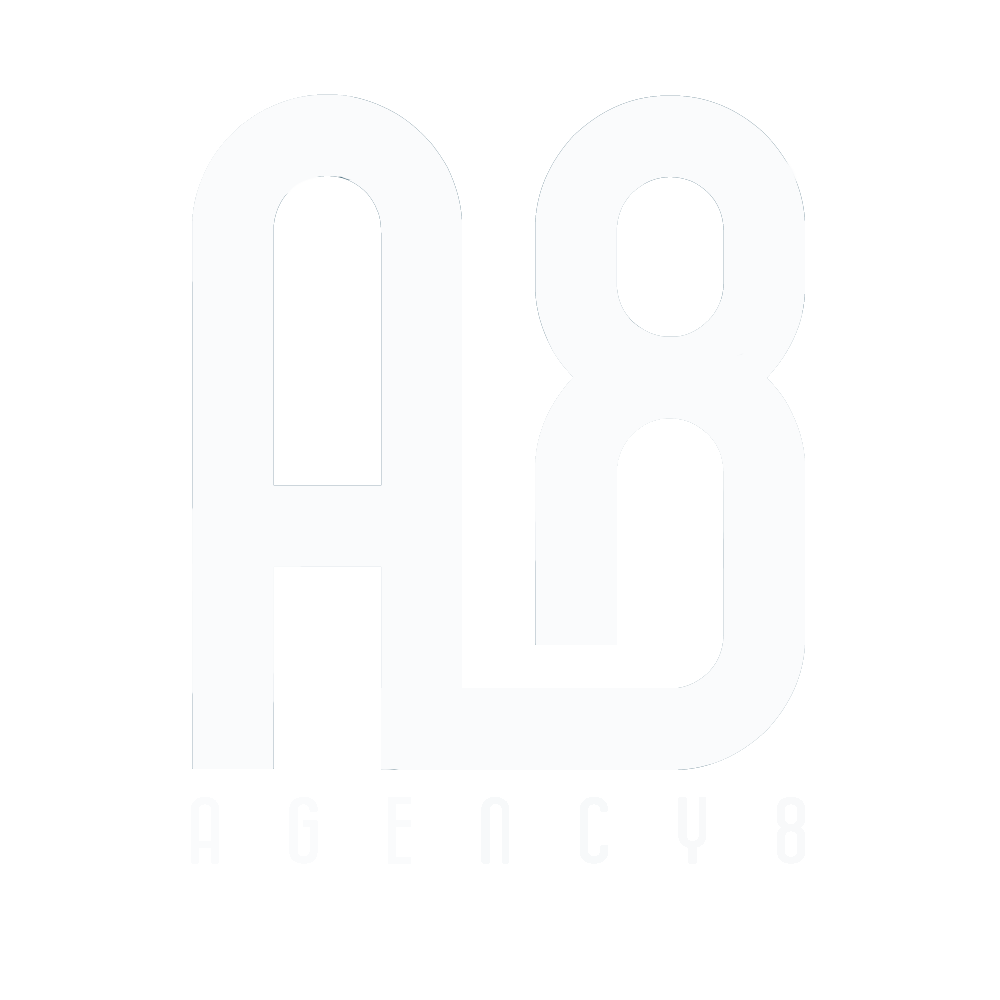Choosing the right social media platform(s) for your business can be daunting – there are a lot of them out there and they all have their own unique set of pros and cons. However, by knowing your target audience and what each social media platform offers, you can make an informed decision on which one(s) will work best.
Why Social Media Matters for Small Businesses
Small business owners can benefit from some of the value that social media provides. 81% of the US population use social media and, therefore, you have great opportunities to connect with your target audience.
Having a consistent presence on social media can mean:
- Generating more leads
- More website traffic
- Increased brand awareness
- Collaboration opportunities with other businesses or influencers
- Sharing your brand voice
- Connecting with your customers
More and more small business owners are turning to social media platforms and embracing their features and benefits. In the ever-changing landscape of digital marketing, it’s important to stay relevant and social media is a great way to do that.
What social media platforms you should use for your business
As a small business owner, you’re often performing many roles within your company. Running social media accounts may seem like a daunting task when you have so many other things on your plate.
If you’re not yet in a position where you can hire a social media manager, you might want to consider starting with one social media platform first. If you already have a few social profiles, and are unorganized or struggling to keep up with them, this article will help you narrow your focus to one or two platforms where your audience spends the most time.
The social media platform you use for your business should be based on a few key factors: who is your target audience, what message do you want to share, and which platforms will best help you achieve your goals.
To help you determine which social media platform is right for your business, let’s take a look at the top platforms out there, who uses them, and the kinds of content you’ll need to create for that platform.
In this article we’ll look at:
- Tik Tok
Facebook is the most heavily used social platform in the world with over 2.91 billion monthly active users!
The largest age group on Facebook is individuals aged 25-34 and the gender breakdown is 43% female and 57% male. Overall, users spend an average of around 33 minutes per day on Facebook. Facebook is the favorite social network for the following demographics:
- Male internet users, 25-34: 15.9%
- Male internet users, 35-44: 17.7%
- Female internet users, 35-44: 15.7%
- Female internet users, 45-54: 18%
(Source)
Content that is visual, such as images and videos, tends to do well on this platform. Engaging content such as asking users questions or encourages users to tag their friends also does quite well. There’s also the option to post stories or go live to your audience on Facebook. All in all, this provides ample opportunities to create content and share it with your audience.
Some pros of marketing your business on Facebook include the ability to target individuals based on interests, demographics, and behaviors. You can also create lookalike audiences of individuals who have already engaged with your brand in some way to help you expand your reach. Facebook offers ads, boosted content, and the opportunity to partner with influencers for campaigns.
One downside of marketing on Facebook is the platform’s large user base. In order to get noticed, you’ll have to create well-targeted and attention grabbing content. The algorithm also favors content from friends and family over brands which can make it difficult to get your content seen by your target audience.
All in all, Facebook is a great platform for businesses targeting users in the 25-34 year old age group. Content can be created in many different forms, which makes it easy for businesses to stay consistent. However, the vast user base means that you’ll have to work hard in order to stand out.
Instagram is one of the largest social media platforms on the market today. As of Q4 2021, Instagram had over 2 billion monthly active users.
The biggest age group on the platform is users aged 18-24 followed by 25-34 year olds. The gender split is almost even at 50.8% female and 49.2% male. The fastest growing demographic on Instagram is Gen X males and in 2021, the number of men aged 55-64 using Instagram went up by over 60%.
Instagram, like Facebook, is another visually dominant platform. Content types include short-form video (Reels), photos, stories, and going live. In order to create a presence for your brand on Instagram, you should really post:
- Short-form videos as Reels (ideally <15 seconds long)
- Carousel photo posts (posts that include up to 10 images)
- Consistent stories
You also need to be sure that if you’re on Instagram, you’re engaging with your audience. This means responding to comments and direct messages, liking photos where you or your product are tagged, and other such interactions.
There are many types of paid ads available to you on Instagram. You can use them to increase brand awareness, get more website clicks, or promote product catalog sales. Ads include feed ads, story ads, and Reels ads as well as the option to boost posts.
Instagram is a great platform for businesses that have a strong visual element to their products or marketing collateral. Think fashion, food, travel, and home decor. If you have stunning visuals, Instagram should be one of your main social media platforms!
The downside of Instagram is that if you’re not regularly active on the platform, it won’t benefit your business much. 90% of Instagram users follow at least one business on the platform, and it’s important to maintain a connection with your audience so you don’t lose out to the competition.
The best way to grow organically on the platform is through Instagram Reels. I’ve grown my audience to over 85,000 followers and accumulated over 100 million views on my personal Instagram profile. Recently, I taught a 3 session course with my best secrets and tips on how to create Reels for your business. If you’re interested in taking Instagram seriously, check out the course here!
Pinterest is another social media platform that’s growing in popularity, and for good reason – it’s a visual search engine. While Pinterest isn’t necessarily one of the biggest platforms out there, it still boasts over 430 million monthly active users.
If your business is predominantly geared towards women, then you should definitely be on Pinterest! Pinterest users are 60% female and, although male users are slowly increasing, the majority of active users are women.
What works best on Pinterest?
If you have products to sell, then using rich pins is a great way to increase sales. If you don’t have products to sell but are in the service industry, then creating helpful infographics or blog post images are going to be your best bet. And if you’re a food blogger or have a food-related business, then you’re in luck because Pinterest is a great place to share recipes and food photos.
Over 1 billion videos are watched on Pinterest every single day so the platform provides a great opportunity to share your short form videos from other platforms. Visual content really is key on Pinterest but you can easily make graphics on apps like Canva in order to succeed.
One downside to Pinterest is that more frequent posting is generally required. Users hoping to build their brand on Pinterest need to post often in order to capture audience attention. However, if your business is in an industry that thrives on Pinterest (ex. Wedding venues, home decor, etc.) then it’s worth it to produce the level of content necessary to get traction on the platform.
Twitter is a social media platform that is very news driven and has a vast user base that is predominantly male. In fact, as of March 2022, only 30% of Twitter users were women. Twitter’s audience is also highly Liberal and it is the most Liberal leaning social media platform.
42% of Twitter users have a college education and they tend to make more income on average than those on other platforms. Almost half of the users use Twitter regularly as a source to get their news. This is due to the fact that Twitter is very good at breaking news.
If you are trying to reach an audience that is highly educated and looking for news, Twitter should be one of your social media platforms. Twitter is good for businesses that are trying to do B2B marketing or social selling as well. If you have a message that is newsworthy, Twitter should be one of your social media platforms.
If your target audience is predominantly educated men, Twitter also might be the platform for you! It’s a fast moving platform that’s great for breaking news or sharing information, but maybe not the best for female-forward brands such as women’s fashion companies. Twitter also provides an opportunity to connect with brands that are difficult to reach on other platforms.
The downsides of Twitter include that it can be difficult to stand out from the noise or create a solid brand presence. Twitter users spend an average of only 6 minutes per day on the platform, so if your content isn’t near the top of their home page, they likely won’t see you. Other downsides of Twitter include that it’s not very visual and that it can be difficult to track your analytics.
So, is Twitter right for you? If you have a fast moving business or need to share breaking news, yes! If you’re looking to build a strong brand presence or have a more female-forward brand, it might not be the best place to spend your marketing dollars.
Tik Tok
Tik Tok is the new social media platform on the block and it’s quickly becoming popular with Gen Z. Tik Tok was the most downloaded app of 2021 and has a monthly active user base of over one billion.
The largest age group on Tik Tok is Gen Z. In fact, Tik Tok recently overtook Instagram as the most popular app amongst this age group. If you have a product or service that appeals to this demographic, it’s definitely worth considering building a presence on Tik Tok. In the US, 61% of Tik Tok users are female. Additionally, most Tik Tok users also have a profile on another social platform such as Instagram or Pinterest.
If your business is targeting younger consumers, Tik Tok is definitely a social media platform worth considering. The app offers a lot of creative freedom in terms of the types of content you can create. You can use Tik Tok to give your customers a behind-the-scenes look at your business, show off new products, or even just tell your brand story.
The biggest downside to Tik Tok is that it’s still relatively new and there isn’t as much data when it comes to marketing ROI. Furthermore, the app’s content consists only of video. Creating videos can be a time-consuming process so if you’re short on time, Tik Tok might not be for you. That being said, short-form video is quite prominent on the app so you don’t have to make long video content in order to be competitive.
So is Tik Tok right for you? If you have a fun and creative business, enjoy making videos, and are willing to experiment, then the answer is probably yes! If you’re not sure if Tik Tok is right for your business, we recommend starting with another platform such as Facebook or Instagram. You can always come back to Tik Tok later on down the road.
LinkedIn has over 850 million members and while this may not be the biggest social network out there, it’s targeted focus towards business owners and professionals adds value. LinkedIn’s audience is around 57% male and 43% female. 60% of users on LinkedIn are ages 25-34.
If your business offers products or services geared towards other businesses or professionals, then LinkedIn should be a social media platform you focus on. It also holds great opportunities for entrepreneurs to connect with one another and create opportunities for collaboration.
Recently, I was at a business event and people exchanged their LinkedIn information rather than business cards. This way, you can see what the person is up to professionally and maintain a consistent connection with them.
If you’re not sure if LinkedIn is right for your business, I recommend starting with another platform such as Facebook or Instagram and coming back to LinkedIn. While LinkedIn can be a powerful social media platform, it can also require more time and effort to maintain an active presence. Additionally, business owners may find it easier to use for personal use and building a network rather than directly promoting your products or services.
There are a few types of posts you can create on LinkedIn. These include photos, blog posts, polls, going live, and text posts.
The downside of LinkedIn is that it can be easy to get caught up in the business side of things and forget to socialize. If you’re not careful, LinkedIn can start to feel like work rather than a social platform. Another downside is that LinkedIn’s algorithm doesn’t seem to be as user-friendly as other social media platforms. For example, if you post something on LinkedIn, only a small percentage of your connections will see it unless you pay to boost the post.
Is LinkedIn right for you? If you’re a business or company looking to build thought leadership and attract high-quality leads, LinkedIn is a great social media platform for you. If you have an interesting story to tell or are seeking to establish yourself as an expert in your field, LinkedIn is also a good platform for you.
Summary
So, which social profile is best for you? It honestly depends on your business goals and your target audience. In this article, we looked at some of the demographic breakdowns for each platform.
It’s also important to consider how much time you have to create content. Some platforms such as LinkedIn and Pinterest require more time creating content than others like Twitter. On the other hand, social media platforms like Instagram and Tik Tok are becoming more video-dominant. Lastly, there’s Facebook where you’ll have to be quite consistent and create scroll-stopping ads in order to stand out in a massive crowd of users and businesses.
Ultimately, social media management takes time, practice, and patience. Your business won’t go viral overnight but by creating a consistent presence on the platforms where your audience spends time, you’ll be able to reach more potential customers.
If you’re interested in learning more about how social media can benefit your business, or need help creating a strategy, you can book a coaching session with me here!
Happy posting!






